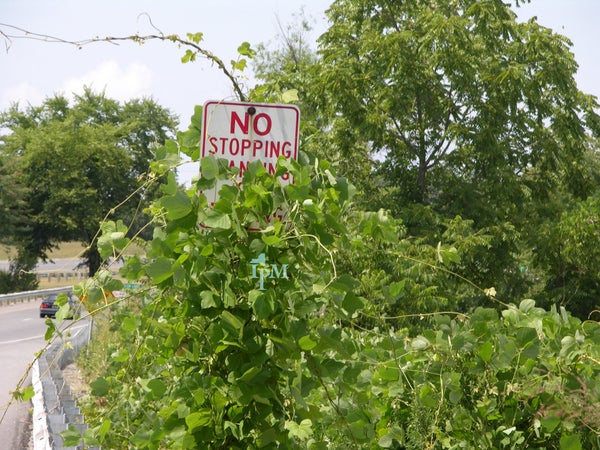This article was published in Scientific American’s former blog network and reflects the views of the author, not necessarily those of Scientific American
Japanese knotweed. Purple loosestrife. Kudzu. Mesquite. Giant hogweed. Bitou bush. What do all of these plants have in common? Easy: they’re all among the most invasive plant species on the planet. Wherever they turn up, native species often get squeezed out and pushed toward extinction.
But, unlike invasive predators such as rats and cats, have these invasive plants ever actually cased another plant species to go extinct? The authors of a new paper, published earlier this month in the journal AoB Plants, said invasive plants pose a global threat, but they weren’t able to document any confirmed native plant extinctions caused by these invaders.
Not yet, anyway.
On supporting science journalism
If you're enjoying this article, consider supporting our award-winning journalism by subscribing. By purchasing a subscription you are helping to ensure the future of impactful stories about the discoveries and ideas shaping our world today.
“The main reason why there is no clear evidence of extinction that can be exclusively attributed to plant invasions is that invasions have not been around long enough,” co-author Dave Richardson of the Centre for Invasion Biology at Stellenbosch University, South Africa, said in a prepared release. “Our research shows that plant extinction is an agonizingly slow process. However, red flags are evident in numerous locations around the world—species that now exist in fragmented populations, with radically reduced opportunities to reproduce.”
Richardson and co-author Paul Downey from the University of Canberra looked at these “red flags” and came up with a six-point “extinction trajectory” for native plant species facing threats from invasive vegetation:
Plants die quicker than they can be replaced by their offspring in some locations.
Plants disappear from some locations entirely, but potential offspring remain as “propagules,” seeds or spores that could regenerate a new cohort of individuals.
Some locations lose both individual plants and their propagules. With no plants or seeds, this is a local extinction.
The last locations hosting a species lose their individual plants, but in some places seeds or spores remain in the soil.
The species is entirely lost in the wild with no individuals or propagules. The only survivors are held in botanic collections.
Extinction. The remaining plants are lost, and the remaining seeds or spores are no longer capable of becoming new plants.
Downey said that this research suggests we need to start managing threatened plants much earlier than we currently do. “If we wait until we have sufficient evidence to show that extinctions are occurring, it will be too late to save a great number of species,” he said. In fact, the authors warn that potentially hundreds of plants species may already be functionally extinct and exist now only as “the living dead.”
The biggest risk point for many plant species appears to exist somewhere between points 2 and 4 on Downey and Richardson’s scale. As we’ve seen with many endangered plants, figuring out how to keep a species alive in a botanical setting is not as easy as simply sticking a seed in the ground. Many plants require very specific conditions in which to germinate—some rely on fire, for example, while others need to be consumed by an animal, after which stomach acids soften a seed’s outer layer before it is pooped back out. Other plants require specific pollinators, which may also disappear with the arrival of invasive species.
Will we discover the details on how these endangered plants propagate in time to save them? That seems unlikely for many species. Another recent paper, published last month in Conservation Biology, warned that plants in general remain understudied while scientists concentrate on mammals and other more charismatic species, much in the same way that scientists also ignore “ugly” creatures. The authors called this “plant blindness” and suggest that it could have severe implications for conservation of many species now and in the near future.
As Downey and Richardson wrote in their paper, “the lack of evidence for extinctions attributable to plant invasions does not mean we should disregard the broader threat.” In fact, that may just make it all the more urgent.
Previously in Extinction Countdown:
